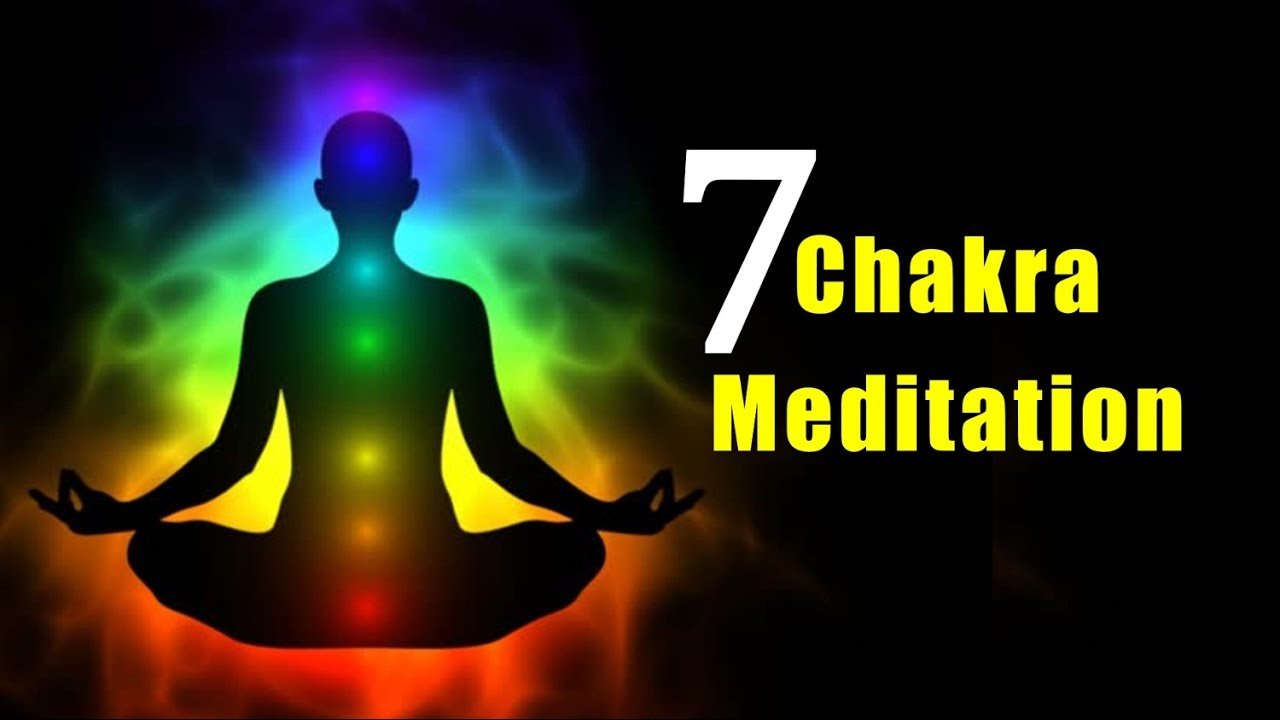Awaken Your Seven Chakras: Balancing and Harmonizing Your Energy Centers, Chanting the Maha Mantra: Harnessing the Power of Sacred Sound
The chakras are energy centers within the subtle body that play a vital role in our physical, emotional, and spiritual well-being. In this article, we delve into the awakening of the seven chakras, exploring techniques and practices to balance and harmonize these energy centers.

1. Root Chakra (Muladhara)
The Root Chakra is located at the base of the spine and represents stability, grounding, and our connection to the Earth. To awaken and balance this chakra, engage in activities that promote a sense of stability and security, such as walking barefoot on the ground, practicing grounding exercises, and connecting with nature.
2. Sacral Chakra (Svadhisthana)
The Sacral Chakra is situated in the lower abdomen and governs our creativity, emotions, and sensuality. To awaken and nurture this chakra, engage in creative pursuits, express your emotions through art or journaling, and practice self-care and self-love.
3. Solar Plexus Chakra (Manipura)
The Solar Plexus Chakra is located in the upper abdomen and is associated with personal power, self-confidence, and inner strength. To awaken and balance this chakra, engage in activities that boost your self-esteem, practice self-empowerment, and cultivate a strong sense of personal identity.
4. Heart Chakra (Anahata)
The Heart Chakra resides in the center of the chest and is the seat of love, compassion, and forgiveness. To awaken and open this chakra, practice acts of kindness, cultivate gratitude and compassion, and engage in heart-centered practices such as loving-kindness meditation.
5. Throat Chakra (Vishuddha)
The Throat Chakra is situated in the throat region and governs communication, self-expression, and authenticity. To awaken and balance this chakra, engage in activities that promote clear and authentic communication, such as singing, chanting, or expressing yourself through writing or public speaking.
6. Third Eye Chakra (Ajna)
The Third Eye Chakra is located between the eyebrows and represents intuition, insight, and inner wisdom. To awaken and activate this chakra, practice meditation, engage in visualization exercises, and cultivate a deep sense of inner awareness and trust in your intuition.
7. Crown Chakra (Sahasrara)
The Crown Chakra is situated at the top of the head and represents spiritual connection, higher consciousness, and enlightenment. To awaken and balance this chakra, engage in practices that foster spiritual growth, such as meditation, prayer, and connecting with the divine or higher power.

Balancing and Harmonizing Your Chakras
To balance and harmonize your chakras, consider incorporating the following practices into your daily routine:
- – Meditation: Practice meditation to quiet the mind, promote relaxation, and activate the flow of energy through your chakras.
- – Yoga: Engage in yoga poses that target specific chakras and help release any blockages or imbalances in the energy centers.
- – Breathwork: Practice deep, conscious breathing exercises to cleanse and invigorate your energy centers.
- – Sound Healing: Explore the use of sound healing techniques, such as chanting or listening to specific frequencies, to balance and harmonize your chakras.
- – Crystals: Use crystals and gemstones associated with each chakra to enhance their energy and promote balance.
By awakening and balancing your seven chakras, you can experience a greater sense of well-being, harmony, and spiritual growth. Embrace these practices and embark on a transformative journey of self-discovery and self-healing.

Chanting the Maha Mantra: Harnessing the Power of Sacred Sound
Chanting the Maha Mantra is a profound spiritual practice that holds the power to uplift the mind, purify the heart, and connect with the divine. In this article, we explore the significance and benefits of chanting the Maha Mantra, guiding you on a transformative journey of sacred sound.
1. The Maha Mantra:
Hare Krishna Hare Krishna, Krishna Krishna Hare Hare, Hare Rama Hare Rama, Rama Rama Hare Hare
The Maha Mantra is a powerful mantra composed of sacred names of the divine. It comprises three main divine personalities: Krishna, the Supreme Personality of Godhead, and Rama, another form of the divine. Chanting this mantra invokes their grace, love, and divine presence.
2. The Significance of Chanting
Chanting the Maha Mantra holds deep spiritual significance. It helps cleanse the mind and heart from negative influences, purifies the consciousness, and elevates one’s spiritual awareness. The vibrations created by chanting penetrate deep within, bringing peace, joy, and a sense of connection to the divine.
3. Benefits of Chanting
Chanting the Maha Mantra offers numerous benefits for spiritual seekers:
- – Purification of the Heart: The chanting process purifies the heart from material desires, allowing love and devotion to blossom.
- – Mind and Emotional Healing: Chanting soothes the mind, relieves stress, and promotes emotional well-being, bringing a sense of calmness and clarity.
- – Spiritual Awakening: The Maha Mantra awakens one’s spiritual consciousness, fostering a deep connection with the divine and expanding spiritual awareness.
- – Devotional Ecstasy: Chanting induces a state of devotional ecstasy, where the heart is filled with divine love and a sense of divine presence.
- – Cultivating Inner Peace: Regular chanting cultivates inner peace and tranquility, helping to navigate life’s challenges with equanimity.
– Enhancing Concentration: Chanting the Maha Mantra improves concentration and mindfulness, aiding in the practice of meditation and self-reflection.
– Community and Unity: Chanting together in a group or community creates a sense of unity, fostering a supportive spiritual environment.
4. How to Chant the Maha Mantra?
To begin chanting the Maha Mantra:
- 1. Find a quiet and peaceful place where you can chant without distractions.
- 2. Sit comfortably in a relaxed posture, keeping your spine upright.
- 3. Take a few deep breaths to center yourself and quiet the mind.
- 4. Begin chanting the Maha Mantra with sincerity and devotion, either silently or aloud.
- 5. Focus your attention on the sound vibrations and the divine names.
- 6. Chant with a gentle rhythm, allowing the mantra to flow naturally.
- 7. Let go of any expectations and immerse yourself in the sacred sound vibrations.
- 8. Continue chanting for a duration that feels comfortable to you, gradually increasing the time as you progress.
5. Integrating Chanting into Daily Life
To experience the full benefits of chanting the Maha Mantra, consider integrating it into your daily life:
- – Morning Practice: Begin your day with a dedicated chanting practice to set a positive and spiritually charged tone for the day ahead.
- – Regular Sadhana: Establish a regular chanting sadhana (spiritual practice) that suits your schedule and commitments.
- – Mindful Chanting: Incorporate chanting into daily activities such as walking, cooking, or cleaning, allowing the sacred vibrations to permeate your actions and thoughts.
- – Group Chanting: Join group chanting sessions or kirtan gatherings to experience the collective energy and support of like-minded individuals.
Conclusion
Chanting the Maha Mantra is a transformative spiritual practice that opens the doors to divine love, inner peace, and spiritual awakening. Embrace the power of sacred sound, surrender to the vibrations of the mantra, and allow it to guide you on a profound journey of self-discovery and spiritual growth.
FAQs
1. Q: How do I know if my chakras are imbalanced?
A: Imbalances in chakras can manifest as physical, emotional, or spiritual issues. Common signs of imbalances include physical ailments, mood swings, lack of creativity, and feeling disconnected from oneself. Consult with an energy healer or holistic practitioner for a chakra assessment.
2. Q: How long does it take to awaken and balance the chakras?
A: The time required to awaken and balance the chakras varies for each individual. It depends on factors such as your current state of well-being, commitment to practices, and willingness to delve into inner work. Consistency and patience are key.
3. Q: Can I work on balancing one chakra at a time?
A: Yes, focusing on one chakra at a time can be beneficial, especially if you feel a particular chakra needs attention. However, it’s important to eventually work on balancing all the chakras for overall harmony and well-being.
4. Q: Can I awaken my chakras through self-practice, or do I need a guide?
A: Awakening and balancing chakras can be done through self-practice, but guidance from an experienced practitioner or teacher can provide valuable insights and techniques for a more effective journey.
5. Q: How often should I practice chakra awakening techniques?
A: The frequency of practice depends on your personal preference and schedule. Consistent practice, even if it’s a few minutes each day, can yield positive results. Listen to your body and intuition when deciding how often to engage in chakra awakening practices.
6. Q: Can I chant the Maha Mantra in any language?
A: The Maha Mantra is traditionally chanted in Sanskrit as “Hare Krishna Hare Krishna, Krishna Krishna Hare Hare, Hare Rama Hare Rama, Rama Rama Hare Hare.” However, the most important aspect is the sincere intention and devotion behind the chanting, irrespective of the language used.
7. Q: How long should I chant the Maha Mantra?
A: The duration of chanting can vary based on personal preference and availability of time. Start with a few minutes and gradually increase the time as you feel comfortable. Chanting with regularity and consistency is more important than the duration.
8. Q: Can I chant silently in my mind?
A: Yes, chanting silently in the mind can be just as effective as chanting aloud. The focus should be on the sincerity and devotion behind the chanting, regardless of whether it is vocal or mental.
9. Q: Can I chant the Maha Mantra while doing other activities?
A: Yes, you can chant the Maha Mantra while engaging in daily activities. It can become a mindful practice where you infuse your actions with sacred sound vibrations. However, it’s also beneficial to set aside dedicated time for focused chanting without any distractions.
10. Q: Can I chant the Maha Mantra without being part of a specific spiritual tradition?
A: Yes, the Maha Mantra can be chanted by anyone, regardless of their spiritual or religious background. The mantra transcends specific traditions and is open to all who seek spiritual upliftment and connection with the divine.
https://www.goodnet.org/articles/7-chakra-sounds-for-healing




